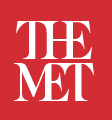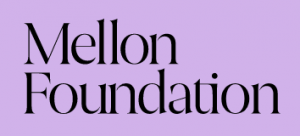The Metropolitan Museum of Art Curatorial Research Fellowship
Two fellowship positions funded by The Andrew W. Mellon Foundation provide scholarly support for the Museum's curatorial program through focused art-historical research, cataloguing of the permanent collection, and advancing digital scholarship practices. The fellows work with a curatorial mentor to learn best practices in cataloguing, with the goal of developing full catalogue information for selected object records. This involves research on issues of authentication, dating, provenance, exhibition history, and bibliography.
The fellows transfer all paper-based records for the selected group of objects to The Museum System (TMS) collections-management database for integration on the Museum's website. Given the large volume of digitized information in the form of images, texts, and other data, the fellows are expected to explore new approaches and practices for communicating their collections research. They also work with conservators, scientists, educators, Digital Department staff, and other professionals during their tenure. The fellows are fully integrated into the life of The Met and are given unique access to the inner workings of the Museum through a rich program of tours, roundtable discussions, and workshops.
Projects
Arts of Africa, Oceania, and the Americas
In anticipation of the first major renovation of The Met's Michael C. Rockefeller Wing, originally opened in 1982, the Department of the Arts of Africa, Oceania, and the Americas (AAOA) seeks a specialist of ancient American art to assist with the comprehensive reinstallation of the Museum's approximately 4,000 works of art from the Andean region of South America. Working directly with the curators of this foremost collection of ancient American art in the U.S., the selected fellow will have an exceptional opportunity to engage and enliven related works by employing the wealth of comparative archaeological data that has emerged over the past several decades in areas such as Andean metalworking technologies, the undervalued role of women of power, and our increasingly nuanced understanding of dynastic patronage. While emphasis is placed on updating and enlarging existing object records in The Museum System (TMS) database, the fellow is expected to contribute significantly to the new organization of our galleries in ways that go beyond style to embed these works in specific times and places, thereby presenting a fresh view of ancient American art that will visually and conceptually invigorate new generations of Museum visitors. With ample opportunities to devise creative ways of engaging diverse audiences, whether through the integration of sound (indigenous languages and perspectives, traditional music where appropriate), supplemental imagery (site views, reconstructions, archival photographs), digital media, or other means, the intent of this project is to catalog the ancient Andean collection in a manner that is both deeply scholarly (reflective of the Museum's high research standards) and accessible to the broadest possible public.
The ideal candidate for this fellowship is fully bilingual (English/Spanish), underscoring the institution's commitment to both staying abreast of international scholarship and also reaching broader communities locally. (Knowledge of indigenous languages such as Quechua is also desirable.) In addition, the selected individual possesses outstanding research, writing, and database (TMS) skills, as well as a demonstrated record of cross-disciplinary creative thinking and accomplishment. The fellow will be mentored by the Andrall E. Pearson Curator in AAOA.
Egyptian Art
From flint sickle inserts set in wood frames to hard stone objects comprising axes, knives, scrapers, and projectile points, The Met’s collection of over 750 stone tools from ancient Egypt are some of the least studied objects in The Met collection, in large part because they require specific training not typical of Egyptological studies. Consequently, the Department of Egyptian Art seeks an Egyptologist with expertise in lithics to examine, effectively catalog, and enliven its expansive collection of lithics in order to provide insights into economic behavior, ritual activity, daily tasks, subsistence, identity, and political economy in ancient Egypt. In addition to recording relevant objects in detail and updating The Museum System (TMS) and Collection Online, the selected individual will: 1) devise dynamic ways of making an essential yet oft-neglected group of objects interesting and therefore more accessible to visitors and scholars by providing clear descriptions of each tool; 2) undertake research to identify the way a tool (or group of tools) was manufactured and used and how it impacted the inhabitants of ancient Egypt; 3) update and correct existing tombstone information for accuracy; and 4) consult the relevant literature to add to the nascent bibliography. Such activities may result in publishable papers, Heilbrunn Timeline essays, or detailed curatorial interpretations.
The ideal candidate for this fellowship possesses a PhD in archaeology, which could be from a Department of Anthropology or Egyptology, with a specialization in archaeological lithics as well as field experience in Egypt. The individual should have a clear interest in museum work and a facility with objects. The selected fellow will work directly with the Curator in Charge of Egyptian Art.
Medieval Art and The Cloisters
The Met's Department of Medieval Art and The Cloisters seeks a specialist of medieval European art history to evaluate and catalog the Museum's extensive holdings of ivory carvings, researching issues of art history, authentication, dating, provenance, exhibition history, and bibliography. The cataloging work will inform a broader collection assessment for de-accession and display and, eventually, support reinstallation and interpretive planning for the medieval galleries. The fellow should also have a demonstrated commitment to digital humanities and an interest in presenting The Met's collections online.
Fully integrated into the work of the Department, the selected individual will have the opportunity to work with multiple curators (in addition to the principal supervisor), attend curatorial meetings, and participate in the broader intellectual life of the Museum. Primary responsibilities include: 1) researching and cataloging the ivory collection, including consulting with a variety of Museum experts, as well as participating in collection assessments by outside specialists; 2) entering catalog information in The Museum System (TMS) while ensuring the bibliographic, provenance, and exhibition histories are up to date; and 3) conceptualizing and helping to implement new ways to present collection information online and in the galleries.
The fellow will work closely with the curator overseeing the Museum's collection of medieval European ivory, including elephant ivory, walrus ivory, bone, and horn from the 4th to 15th centuries, with the Department's Collections Manager, and with conservators and/or scientists to develop the technical art history surrounding this area of the collection. The ideal candidate for this fellowship has proven research, writing, database, and organizational skills; the ability to conduct research in European languages, especially German and French; and a demonstrated capacity for independent work. Candidates should hold a PhD in medieval art and show a willingness to embrace cross-disciplinary creative thinking.
Fellowship Period
The fellowship period is September 1 through August 31. All fellowships must take place within this period. The Andrew W. Mellon Curatorial Research Fellowship carries the possibility of renewal for a second year.
Eligibility
Candidates must hold a doctoral degree (or international equivalent) in art history or archaeology. The candidate must have received the degree within five years of the start date of the fellowship (that is, September 1 of the year following the application deadline).
Funding
The fellow will receive:
• An annual salary of $59,702
• Fringe benefits
• A stipend of up to $6,000 for research-related travel
How to Apply
All applications to The Met Fellowship Program must be submitted online and in English. Academic and Professional Programs will not accept applications or related materials via email, postal mail, or in person.
Materials Required for All Applications
The following materials must be included with all applications (as .doc or .pdf files):
• Curriculum vitae of education, professional experience, honors, awards, and publications
• Three letters of recommendation, at least one academic and one professional, uploaded directly by the recommenders, none of whom may be current Met staff. Recommenders are encouraged to submit their letters in English.
• Project proposal or statement (see instructions for specific fellowships below)
• Official transcripts (undergraduate and graduate)—for junior fellowship applicants only
Please read Program-Specific Application Requirements below. Depending on the category of fellowship for which you are applying, additional materials may be required.
For more information about the application process, please read our Frequently Asked Questions (FAQ) page. If your question is not answered there, please contact us at academic.programs@metmuseum.org.
All applicants will be notified by the last Friday in February following the application deadline.
Program-Specific Application Requirements
The deadline for Curatorial Research Fellowship application materials, including transcripts and letters of recommendation, is 5 pm (EST) on the first Friday in November.
In addition to the CV, official transcripts, and three letters of recommendation, please also include:
- A cover letter addressing your interest in the fellowship position
- A statement, not to exceed 1,000 words, specifying your areas of research and their relationship to the Museum's collection and activities. Include relevant experiences related to your chosen curatorial project area.
- A digital interpretation statement, not to exceed 500 words, addressing the way in which you see yourself contributing to the development of new interpretive research models in the digital environment.

